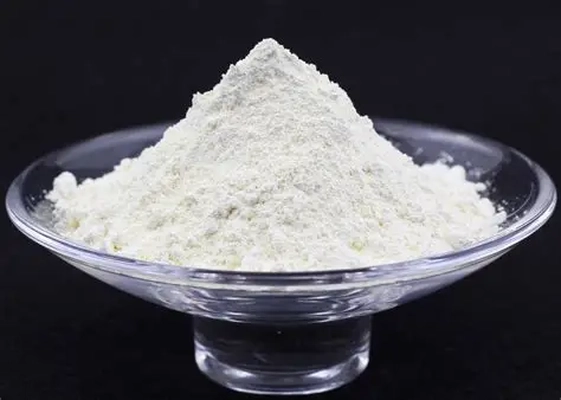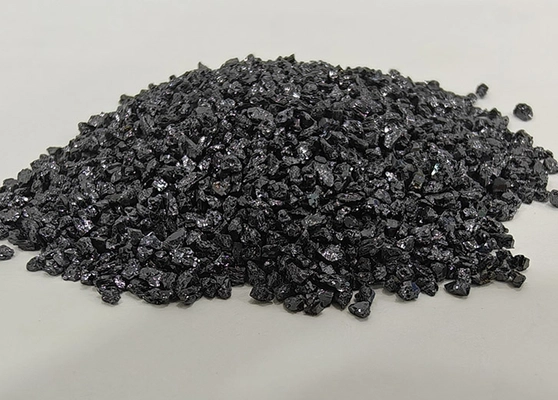Quick Answer
Cerium oxide (CeO₂, “ceria”) is a rare-earth oxide used primarily as a precision polishing medium for glass, optical components, display substrates, and advanced ceramics. Its unique surface chemistry—especially the redox pair Ce³⁺/Ce⁴⁺—enables both mechanical abrasion and mild chemical interaction with silica-based surfaces, producing fast removal rates with low scratch counts and excellent final finish. Typical polishing grades range from 0.5–5 μm (D50) at ≥99.5–99.9% purity. Beyond polishing, ceria serves as an oxygen-storage component in catalysts and as an additive in high-temperature ceramics, but its most recognized industrial application remains glass/optic finishing.
Table of Contents
- 1. What Is Cerium Oxide?
- 2. Physical and Chemical Properties
- 3. Why Cerium Oxide Polishes Glass So Well (Mechanism)
- 4. Grades, Particle Size (PSD), and Purity for Polishing
- 5. Key Industrial Applications
- 6. Comparison: Cerium Oxide vs Alumina vs Silicon Carbide
- 7. Process Parameters in Ceria-Based Polishing
- 8. Selection Guide: Matching Grade to Use Case
- 9. Quality Control, Cleanliness, and Packaging
- 10. FAQ
1. What Is Cerium Oxide?

Cerium oxide (chemical formula CeO₂) is a pale-yellow rare-earth oxide derived from cerium, the most abundant element in the lanthanide series. In powders, it is often referred to as ceria. Ceria exhibits a fluorite crystal structure and readily forms oxygen vacancies, enabling a reversible redox cycle between Ce⁴⁺ and Ce³⁺. This oxygen mobility underpins its use in catalytic converters and solid oxide fuel cells. In surface finishing, ceria’s combination of high hardness and chemically active surface sites results in a hybrid mechanochemical polishing action, which distinguishes it from purely mechanical abrasives.
2. Physical and Chemical Properties
The table below lists indicative material properties for engineering reference (values vary by source and grade):
| Property | Typical Value / Range | Notes |
|---|---|---|
| Chemical Formula | CeO₂ | Often contains trace La, Pr, Nd depending on source |
| Crystal Structure | Fluorite (Fm-3m) | High oxygen mobility; Ce⁴⁺/Ce³⁺ redox |
| Purity (polishing grade) | ≥99.5–99.9% | Low Fe, Ca, Na, Mg, transition metals favored |
| Particle Size (D50) | 0.5–5 μm | With D90 caps to control scratch risk |
| Density (true) | ~7.1 g/cm³ | High density aids momentum at given size |
| Mohs Hardness | ~6–7 | Harder than glass; softer than alumina or SiC |
| Vickers Hardness | ~800–1200 HV (grade-dependent) | Indicative; varies with microstructure |
| Melting/Decomp. | > 2400 °C | High thermal stability |
| Surface Chemistry | Ce⁴⁺/Ce³⁺ redox; Lewis acidity | Enables mechanochemical glass removal |
| Typical pH (slurry) | 4–10 (controlled) | Often mildly acidic or near-neutral |
Interpretation: Compared with high-hardness abrasives like silicon carbide (Mohs ~9.2–9.4) and alumina (~9), ceria is softer but features chemistry that selectively interacts with silica-rich surfaces. This controlled chemical action explains why ceria achieves high removal rates (MRR) with lower scratch risk on glass and optics than many purely mechanical abrasives.
3. Why Cerium Oxide Polishes Glass So Well (Mechanism)
Polishing glass (amorphous SiO₂ network) involves material removal at the nanometer-to-micrometer scale without creating subsurface damage. Ceria’s effectiveness arises from two synergistic effects:
- Mechanical abrasion: The particles’ hardness and angular features micro-cut and micro-plow the surface, smoothing asperities. Although softer than alumina/SiC, ceria’s density and crystallite edges still provide sufficient mechanical action.
- Chemical interaction: Surface cerium sites (Ce⁴⁺/Ce³⁺) can bond with or exchange oxygen with silanol groups on glass, facilitating a weakly bonded hydrated silica layer. Under shear, this layer is more easily removed, enabling faster MRR at a given pressure with fewer deep scratches.
The result is chemomechanical polishing (CMP): the slurry chemistry (pH, complexing agents), particle size distribution, and pad mechanics combine to produce a controlled dissolution-plus-shear process. Proper control yields low surface roughness (down to <10 nm Ra in optical finishing) and excellent clarity.
4. Grades, Particle Size (PSD), and Purity for Polishing
Commercial polishing grades of ceria are specified by purity and particle size distribution (PSD). For precision work, buyers usually define:
- D50 target (e.g., 0.7 μm, 1.0 μm, 3.0 μm)
- D90 cap (e.g., ≤1.5 μm for sub-micron grades; ≤5.5 μm for 3 μm grades)
- Fines fraction (≤1 μm or ≤0.5 μm content) to tune slurry rheology and finish
- Contamination limits (Fe₂O₃, CaO/Na₂O, magnetic residue)
- Moisture / LOI (for storage stability and dispersion)
Sample positioning (indicative):
- 0.5–1.0 μm D50: Final optical polish, scratch-count critical glass, display cover glass, precision ceramic lapping.
- 1–3 μm D50: General glass polishing, beveling lines, low-scratch finishing after pre-grind steps.
- 3–5 μm D50: Higher MRR on robust substrates; followed by a finer step for gloss.
Purer grades (≥99.9%) minimize metallic contamination and color tinting, which can be crucial in optics and specialty ceramics.
5. Key Industrial Applications
Glass finishing and repair. Ceria slurries remove haze, micro-scratches, and slight surface defects from float glass, automotive glass, architectural glass, and cover glass. In repair kits, ceria is commonly used to reduce scratches and improve clarity.
Optical components. Lenses, prisms, windows, and optical flats are polished with highly controlled ceria slurries (often sub-micron grades), achieving low roughness and minimal sub-surface damage (SSD).
Advanced ceramics. Alumina, zirconia, and other hard ceramics can be finished with ceria where surface chemistry assists removal without introducing coarse scratches. Tailoring pH and dispersants is crucial for process stability.
Semiconductor / CMP contexts. While silica and alumina slurries are prevalent in semiconductor CMP, ceria-based slurries are used in specific dielectric or barrier processes due to their selectivity and controlled interaction with oxide films.
Catalysis (non-abrasive field). Ceria’s oxygen storage makes it valuable in automotive catalysts and solid oxide cells; though distinct from polishing, this underscores ceria’s redox-active surface chemistry—the same feature that benefits glass finishing.
6. Comparison: Cerium Oxide vs Alumina vs Silicon Carbide
The following table contrasts ceria with two widely used abrasives—alumina and silicon carbide—in the context of polishing and fine finishing. Values are indicative for educational use.
| Parameter | Cerium Oxide (CeO₂) | Alumina (Al₂O₃) | Silicon Carbide (SiC) |
|---|---|---|---|
| Primary Action | Mechanochemical | Mechanical | Mechanical (very sharp) |
| Mohs Hardness | ~6–7 | ~9 | ~9.2–9.4 |
| Vickers (HV) | ~800–1200 | ~1800–2000 | ~2500–2800 |
| True Density (g/cm³) | ~7.1 | ~3.9 | ~3.2 |
| Typical Polishing D50 | 0.5–5 μm | 0.3–3 μm | 0.5–6 μm |
| Finish on Glass | Excellent (low scratch count) | Good (may need slurry tuning) | Aggressive; risk of micro-scratches |
| Removal Rate on Glass | High for its hardness class | Moderate–High | High (but finish-critical) |
| Chemical Selectivity | Yes (Ce⁴⁺/Ce³⁺) | No (inert) | No (inert) |
| Typical Use Focus | Glass/optic final polish | Metals/ceramics/oxide films | Ceramics, hard substrates, pre-polish |
Takeaway: When the substrate is silica-rich (e.g., glass), ceria’s mechanochemical behavior often yields a better finish-to-rate ratio than harder, inert abrasives. Alumina provides a strong balance across materials. SiC delivers very high cutting power, excellent for pre-polish or where removal trumps scratch risk, but typically requires a subsequent finer step for cosmetic or optical finishes.
7. Process Parameters in Ceria-Based Polishing
Polishing outcomes depend on materials, slurry chemistry, pad/cloth, pressure, velocity, and time. Several engineering relations are helpful:
7.1 Energy and kinematics
For a particle of mass m moving at velocity v, impact energy and momentum are:
E = ½ m v² p = m v
For spherical particles of diameter d and density ρ, m ≈ (π/6)ρd³. Ceria’s density (~7.1 g/cm³) provides substantial momentum at the same size relative to lighter media, aiding controlled material removal in slurry flows.
7.2 Preston’s equation (CMP-style approximation)
In many polishing contexts, material removal rate (MRR) correlates with pressure and relative velocity:
MRR ≈ k · P · V
where k is an empirical Preston coefficient capturing particle chemistry, pad compliance, slurry pH, and temperature; P is normal pressure, V is relative speed. In ceria systems, k is influenced by Ce⁴⁺/Ce³⁺ surface state and pH-dependent interactions with silica.
7.3 Slurry chemistry
- pH: Mildly acidic to near-neutral environments are common. pH shifts alter glass hydration layers and ceria surface charge, impacting selectivity and MRR.
- Dispersants: Polyacrylates, citrates, or proprietary wetting agents stabilize sub-micron suspensions and prevent agglomeration.
- Ionic cleanliness: Trace Na⁺, Ca²⁺, Fe³⁺ can influence residue and haze; high-purity water and low-ion formulations improve optical outcomes.
7.4 Pads and kinematics
Polishing pads/cloths manage slurry transport and contact mechanics. Open-cell pads enhance slurry delivery and debris evacuation; tighter pads concentrate local shear for higher removal but may raise temperature and risk of micro-scratches. Relative speed, dwell time, and conditioning intervals must be balanced to maintain consistent MRR and finish.
8. Selection Guide: Matching Grade to Use Case
- Define the substrate: Soda-lime glass, borosilicate, aluminosilicate (cover glass), fused silica, optical glass, or advanced ceramic.
- Set finish targets: Ra/Rq goals, scratch-count thresholds, transmitted/reflective clarity, and permissible haze.
- Choose D50 & D90: Sub-micron grades (<1 μm D50, tight D90) minimize scratch risk for final optical steps. 1–3 μm suits general glass polishing. 3–5 μm favors higher MRR with a subsequent fine step.
- Control purity & contaminants: Specify maximum Fe₂O₃ (e.g., ≤0.1–0.2%), magnetic residue limits (e.g., ≤100–200 ppm), and moisture.
- Tune slurry chemistry: Select pH, dispersant, and solids loading to balance rate and finish; verify stability (no settling or gelation).
- Pilot and qualify: Run controlled trials on representative coupons; measure MRR, final roughness, scratch density, optical transmission, and cleanliness.
9. Quality Control, Cleanliness, and Packaging
- Analytical methods: XRF/ICP-OES for elemental impurities; laser diffraction (PSA) for PSD; magnetic tests for ferromagnetic residues; moisture/LOI for storage stability.
- Documentation: Certificate of Analysis (COA) listing Si (as impurity), Fe₂O₃, CaO/Na₂O, D10/D50/D90, fines, moisture; Safety Data Sheet (SDS); Technical Data Sheet (TDS) with recommended use.
- Packaging: Moisture-barrier bags (e.g., foil-lined) in 1 kg/5 kg units or 25 kg cartons; clearly labeled with lot, PSD, purity, and handling guidance.
- Storage: Dry conditions (<60% RH), sealed after opening; avoid contamination with metals or alkali which can affect haze and finish.
10. FAQ
Q1: Why is cerium oxide preferred for glass polishing?
Because ceria combines mechanical abrasion with mild chemistry toward silica, enabling high removal rates and low scratch counts versus purely mechanical abrasives. Its Ce⁴⁺/Ce³⁺ surface sites foster a hydrated silica layer that shears away cleanly.
Q2: What particle size should be used for final optical finishes?
Sub-micron grades (e.g., D50 ~0.5–1.0 μm with a tight D90) are standard for final steps. Coarser grades (1–3 μm) are common for general glass polishing prior to a finishing pass.
Q3: Does higher purity matter?
Yes. Higher purity (≥99.9%) reduces ionic and metallic contaminants that can cause haze or discoloration, especially critical in optical applications.
Q4: How does ceria compare with alumina for polishing?
Alumina is harder and purely mechanical; it can achieve excellent finishes but may require more careful slurry tuning to avoid scratches on glass. Ceria’s mechanochemical behavior generally delivers a better finish-to-rate balance on silica-rich substrates.
Q5: Can silicon carbide replace ceria in glass polishing?
SiC is much harder and highly effective for pre-polish or rapid removal, but it is more likely to introduce micro-scratches on glass. A subsequent finer step—often ceria or fine alumina—is typically required for optical finishes.
Q6: What slurry pH works best?
Near-neutral to mildly acidic conditions are common. pH affects both glass hydration and ceria surface charge; the optimal range depends on the substrate and desired removal/finish balance.
Q7: How do I control scratch count?
Use a tight PSD (strict D90), ensure good dispersion (dispersants, ultrasonic de-agglomeration), maintain clean pads and equipment, and filter the slurry to remove oversized particles or debris.
Q8: Is cerium oxide hazardous?
Ceria powders are generally regarded as low-toxicity solids but can create dust; standard precautions include dust masks/respirators, gloves, and local exhaust ventilation. Always follow the product’s SDS.
